Age-Appropriate Toys: A Guide for Every Stage of Childhood
Childhood is a time of growth, learning, and discovery, where toys play a crucial role in shaping development. The right toys enhance physical, emotional, cognitive, and social skills while fostering connections between parents and children. This guide explores how to choose age-appropriate toys that make playtime enjoyable and enriching
5/8/20244 min read
Infancy (0–12 Months): Discovering the World Through Senses
During their first year, babies are like tiny scientists, exploring their environment primarily through their senses. Toys at this stage should focus on sensory stimulation to help develop motor skills and cognitive abilities.
Recommended Toys:
Soft Toys: Plush toys with textures and soothing sounds are comforting for babies.
Rattles and Teethers: Brightly colored rattles and safe teethers engage their senses and relieve teething discomfort.
Activity Gyms: Playmats with hanging toys encourage reaching, grasping, and tummy time.
Mirrors: Baby-safe mirrors help infants discover their reflection, sparking curiosity.
Developmental Benefits:
Promotes hand-eye coordination.
Stimulates auditory, visual, and tactile senses.
Encourages early motor skills like reaching and grasping.
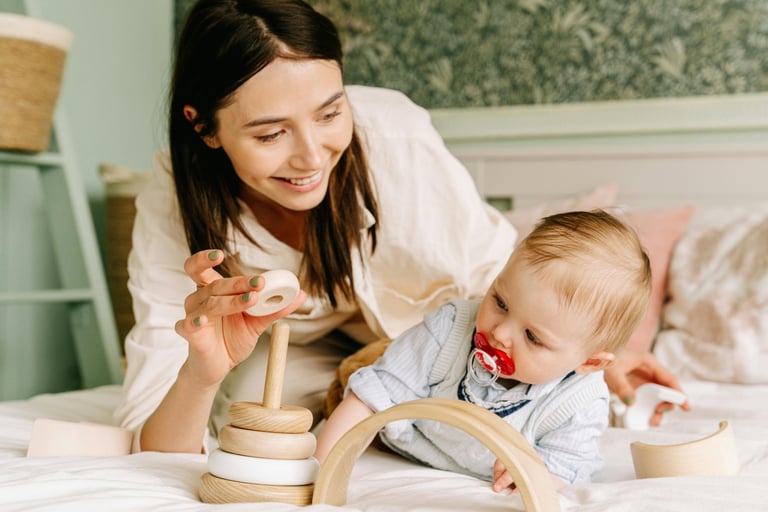

Toddlerhood (1–3 Years): Exploring Mobility and Independence
Toddlers are bursting with energy and curiosity as they begin walking, talking, and asserting their independence. Toys at this stage should focus on physical activity, language development, and problem-solving skills.
Recommended Toys:
Push-and-Pull Toys: Items like toy wagons or pull-along animals enhance motor skills.
Building Blocks: Simple blocks encourage stacking, knocking over, and rebuilding—great for creativity and fine motor skills.
Interactive Books: Books with textures, flaps, and sounds make reading fun while boosting vocabulary.
Musical Instruments: Toddler-sized drums or tambourines introduce rhythm and creativity.
Shape Sorters: These toys help toddlers recognize shapes and improve problem-solving abilities.
Developmental Benefits:
Enhances gross motor skills like walking and running.
Builds language and communication abilities.
Encourages curiosity and spatial awareness.
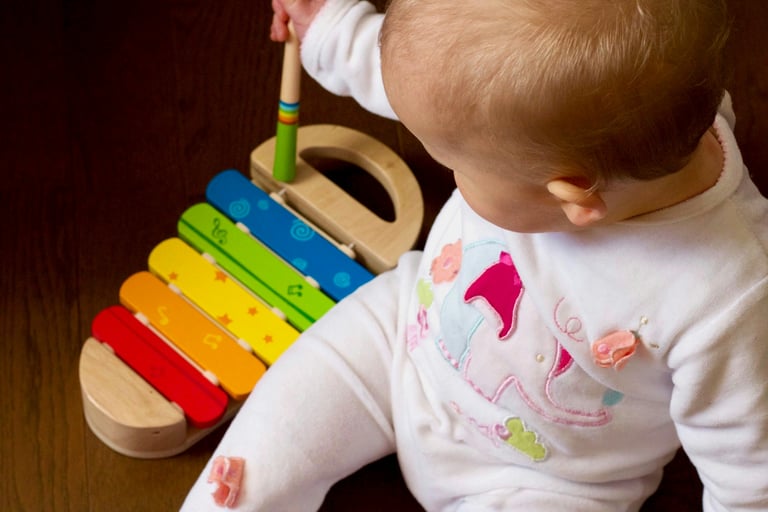

Preschool Age (3–5 Years): Imagination Takes Center Stage
Preschoolers have boundless imaginations, and toys that foster creative play and social interaction take precedence. This is also the stage where early learning becomes crucial.
Recommended Toys:
Pretend Play Sets: Items like play kitchens, doctor kits, or costumes allow children to role-play and explore scenarios.
Art Supplies: Crayons, finger paints, and craft kits spark creativity and fine motor development.
Puzzles: Large-piece puzzles teach problem-solving while improving concentration.
STEM Toys: Early science kits and building sets introduce basic concepts in science, technology, engineering, and math.
Outdoor Toys: Bicycles with training wheels, sandbox toys, or balls encourage physical activity.
Developmental Benefits:
Enhances creativity and imaginative thinking.
Develops fine motor skills and problem-solving abilities.
Boosts social skills through cooperative play.
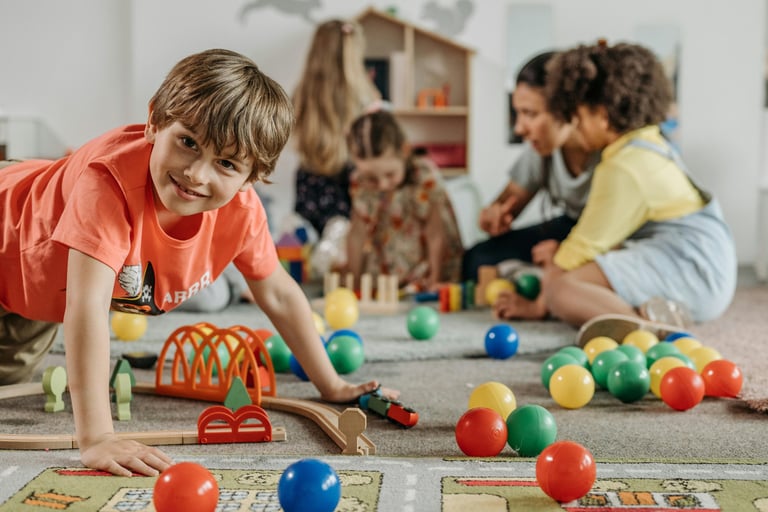

School Age (6–12 Years): Expanding Knowledge and Social Skills
As children enter school, their toys should challenge them intellectually while supporting their social interactions and hobbies. This stage is ideal for toys that align with their specific interests.
Recommended Toys:
Board Games: Strategy and teamwork games teach patience and collaboration.
Advanced STEM Kits: Robotics kits, coding games, or science experiments foster critical thinking and a love of learning.
Sports Equipment: Items like soccer balls, badminton sets, or jump ropes encourage physical fitness.
Model Kits: Detailed models of cars, airplanes, or buildings stimulate focus and creativity.
Books and Educational Games: Age-appropriate literature and interactive games support literacy and learning.
Developmental Benefits:
Strengthens critical thinking and problem-solving skills.
Encourages teamwork and collaboration.
Promotes physical health and builds hobbies.
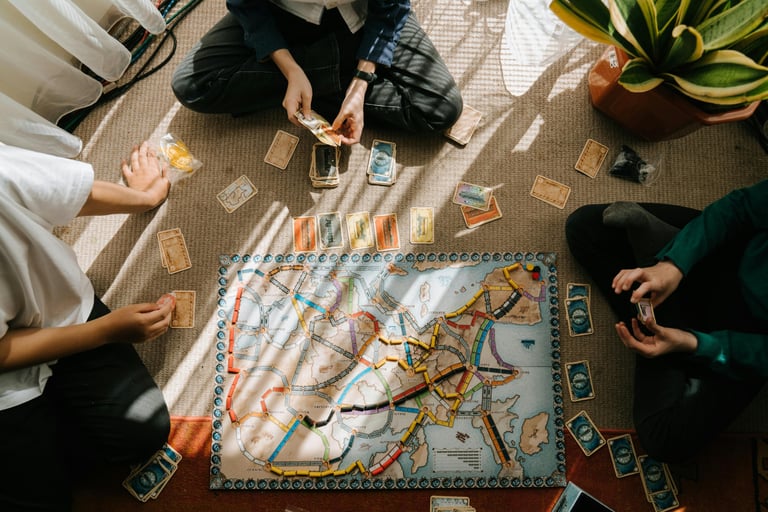

Teenagers (13+ Years): Fostering Independence and Interests
Teenagers are developing their identities and exploring hobbies and passions. Toys and activities at this stage should nurture their interests, encourage social interaction, and support relaxation.
Recommended Toys/Activities:
Skill-Based Kits: Items like DIY crafting sets, photography tools, or musical instruments help them explore hobbies.
Board and Card Games: Games that require strategy can be shared with friends or family, promoting social bonding.
Outdoor Gear: Camping kits or sports gear for their favorite activities encourage outdoor exploration.
Tech Gadgets: Coding kits, drones, or virtual reality games engage their curiosity in technology.
Books: Novels or nonfiction books that resonate with their interests are ideal companions.
Developmental Benefits:
Fosters independence and self-expression.
Encourages pursuit of hobbies and career aspirations.
Supports emotional well-being and relaxation.
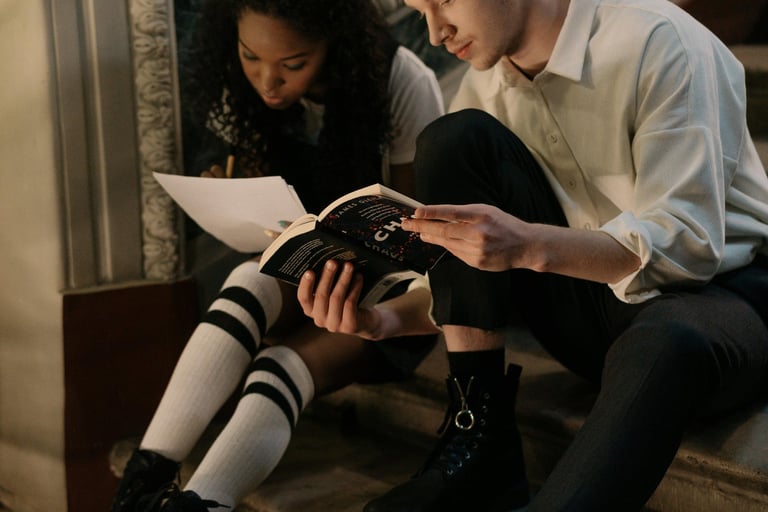

General Tips for Choosing Age-Appropriate Toys
While each age group has its own unique needs, here are some universal tips for choosing toys:
Safety First: Always choose toys with non-toxic materials and appropriate sizes to avoid choking hazards.
Follow Interests: Observe what excites your child and select toys that match their hobbies.
Balance Fun and Education: Opt for toys that entertain while fostering growth and learning.
Encourage Interaction: Toys that promote social play help build communication and teamwork skills.
The Lasting Impact of Age-Appropriate Toys
The right toys at the right time can profoundly influence a child’s development, shaping the way they think, move, and connect with others. They help children learn critical life skills while creating memories that last a lifetime. As parents, caregivers, and educators, choosing toys thoughtfully is an investment in a child’s growth and happiness.
By understanding the developmental needs of each stage, you can turn every toy into a tool for learning, and every play session into an opportunity for connection. So the next time you select a toy, remember—you’re not just buying an object; you’re supporting the beautiful, transformative journey of childhood.
